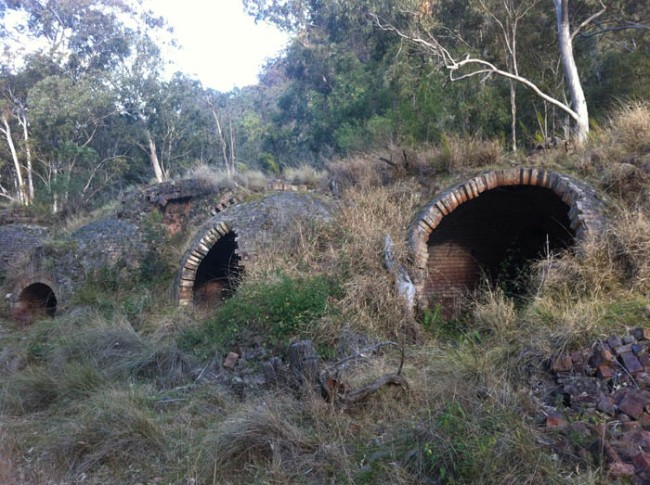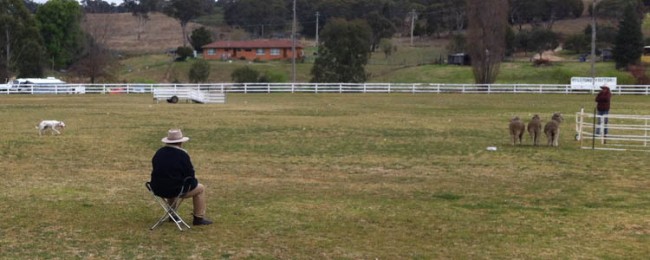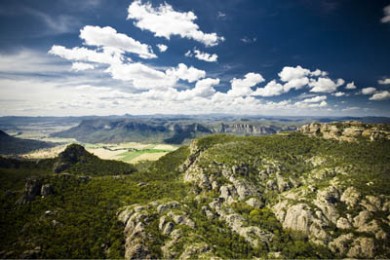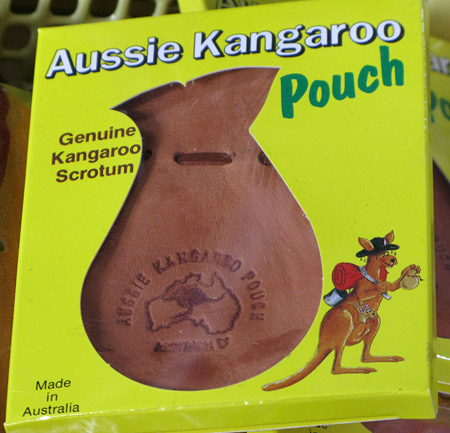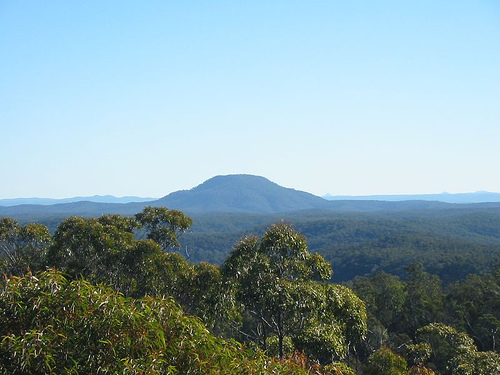One of the many things Sydney has got going for it, is the availability of a vast array of delicious dishes from around the world, with virtually every region of the culinary globe represented. And I don’t mean Massaman curries, Patatas Bravas, Kebabs or Kimchi.
Featuring a selection of acclaimed restaurants, here’s our own list of restaurants in and around Sydney that will introduce your pallet to the finer exploits of world cuisine. The restaurants have selected on the basis of cuisine, customer feedback, ambiance, gut feel and location (e.g. nearby clubs or bars, public transport).
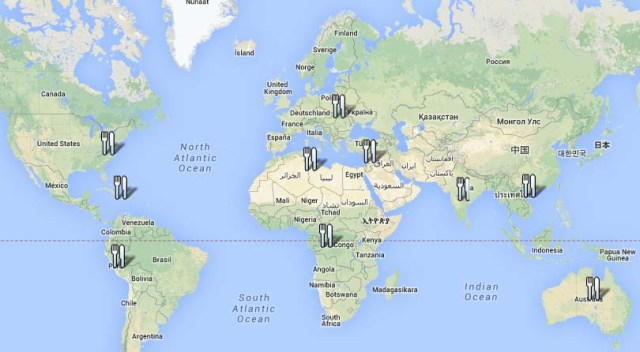
1. From North America, in Newtown: Hartsyard
Located in Newtown, AKA as Sydney’s Brooklyn, are the 6 tables of Hartsyard – a new restaurant run by New York immigrant chefs Naomi Hart and Gregory Llewellyn (fitting the bill with his red baseball cap, striped apron and regulation tatts, having cooked his way around the US before moving to Sydney to work at Wildfire.)
Dishes include:
- Albacore tuna
- Cold-smoked fried chicken buttermilk biscuit, low country sausage gravy
- Pickle back martini
- Pulledpork
- Oyster po’boy
- Handmade Burrata with Eggplant Caponata, Ham Crumbs, Black Olives, Gabbalicious
Address: 33 Enmore Road, Newtown
Licensed: Yes.
Cost: About $45, plus drinks
2. From the Middle East, in Randwick: Lebanon & Beyond
Actually Lakemba would have been an obvious location to tackle a plate of shish, but closer to home or to your inner city hotel, in Randwick, is Lebanon & Beyond. This busy restaurants always has great atmosphere (we prefer the outside area on Alison Road, close to the fresh air and the bottleshop) and food. In Sydney’s east, the chicken is genteel – served as fat breast fillet chunks rubbed with paprika, grilled on a skewer (shish in Arabic) and served on salad. But there’s nothing too genteel about the garlic sauce at this family-style restaurant. The toum is fluffy, smooth, white, not too overpowering (kidding myself here, but anyway) and divine.
Also try the fattoush – crunchy scraps of Lebanese bread, mixed with cucumber, iceberg, mint and tomato, with sprinkled sumac for tartness. The other Lebanese greatest hit dishes are good here, too.
Dishes include:
- Shish
- Fattoush
- Lady Fingers (my favourite)
Address: 187 Alison Road, Randwick
BYO (there’s a great bottle shop next door)
Cost: About $55, plus drinks, for two.
3. From South America, in Surry Hills: Morena
A bit more expensive, but probably worth it – especially if you’re exposure to South American cuisine so far has been limited to Brazilian BBQ, tapas or burrito’s. Morena is a modern Latin American Fine Dining With A Sassy, Cool Vibe. Morena showcases the amazing variety of ingredients, flavours and dishes of Latin American cuisine with a strong Peruvian influence, under the direction of renowned Peruvian Chef, Alejandro Saravia.
Serving top quality dishes, matched with top-notch cocktails including exclusive piscos and international wines, Morena provides a Latin American fine dining experience with passion, fun and a relaxed vibe.
Dishes include:
- Causa de pulpo a la plancha
- Anticucho de Corazón
- Peruvian style spatchcok a la braza
- Solterito Salad
- Picarones e higos de carretilla
Address: 15/425 Bourke Street, Surry Hills
Licensed: yes
Costs: About $60 plus drinks, for two.
4. From Sub-Sahara Africa, in Cremorne: Radio Cairo
A taste of African adventure awaits us at Radio Cairo – a very atmospheric resto that serves up African food, with some Caribbean dishes thrown in for good measure.
Dishes include:
- South African Lamb Sosaties
- Cajun Popcorn
- Dwaaba and Jungle Bread
- BBQ’d Jerk Pork Ribs
- Afro Fries
- African Mint Tea Cream
- Num Num’ Roti Wrap
Great vibe. And across the road there’s the iconic, art deco movie theatre The Orpheum.
Address: 287 Military Road, Surry Hills
BYO : Corkage per person $3.95)
Cost: About $35 (dinner + starter or desert) plus drinks.
5. From North Africa, in Potts Point: Petrol
SBS says: “Okay, okay – Potts Point needs another drinking den/tapas joint like Miranda Kerr needs a nose job, but this fantastically funky breakfast, lunch and tapas joint has a lot going for it. For starters, Petrol stokes the gastronomic fires within, offering sumptuous dishes such as tortilla Espanola replete with salty anchovies, a share plate of dips, or a dish of proscuitto with goat’s cheese. Then there is the rather important matter of drinks, with a sizeable list of 16 quaffers available by the glass, and a slew of sexy cocktail options as well. Add an outside area with views of some of the Cross’s more “eccentric” residents, and Petrol is sure to fuel the engine of many Sydneysiders looking for a good time.
Dishes Include:
- Sottocenera al Tartufo
- Orange Roughy Moroccan Fish Dish
- Morocan Kefta Ball Linguine
- Morocecan Date and Coconut Tart
Address: 9 Springfield Avenue , Potts Point
Cost: About $50 (dinner + starter or desert) plus drinks.
6. From Eastern Europe, in Glebe: Tommy’s Beer Cafe
OK – Eastern Europe is not known for its culinary exploits, but one they do better than anyone: dinner parties. Fased in the bustling community of Glebe, Tommy’s is right in the middle of a myriad bars, restaurants, shops and curiosity stores. The place embodies all the great things about Europe’s cultural heritage: hearty food, welcoming atmosphere and most of all, beer. There’s a German beer hall feel to the place but the menu extends across much of Eastern Europe, including Slovakia, Hungary, Austria and the Czech Republic.
The restaurant is about a 10 minute walk up from the intersection of Glebe Point Road and Broadway and for those coming by car there is usually parking on the side streets.
Dishes include :
- Slovak Halusky
- Strapacky
- Goulash
- Spit Roast Suckling Pig
- one meter sausage
- and more
Address: 123 Glebe Point Road ,Glebe
Cost: About $40 (dinner + starter or desert) plus drinks.
7. From the Caraiben, in Manly: Miss Marleys
Finalist – Best small bar of the year in Australia
One of Sydney’s coolest drinking and dining establishments, Miss Marley’s embodies everything that is great about Manly – exceptional food and the finest cocktails delivered in a friendly and casual environment.
As you slide through the sheer curtains at the entrance, you’ll feel as though you’ve been transported back to the ’50’s – when style and sophistication reigned supreme. The retro backdrop and candle-lit tables provide an ambiance like nowhere else in Manly, and a read through the menu is sure to get your taste buds tingling.
Menu executed by Head Chef Paul Del Altura and the discernable tastes of owner Kieran Bailey, the menu is a concoction of traditional Pan American flavours mixed with some modern flair. Featuring classic Central & South American dishes, as well as influences from Cuba and the Caribbean, it may take you a while to decide which dish to choose!
Luckily, the extensive cocktail and wine menus are on hand to tide you over. Having been created with the same influences in mind, you are sure to find the perfect drink to accompany your meal.
- Navajo Quesadilla
- Crispy skinned quail
- Goats curd & basil stuffed mushrooms
- Aji de Gallina for 2
Address: 32 Belgrave St, Manly
Cost: About $40 (dinner + starter or desert) plus drinks.
No credit cards. Cash only.
8. From South-East Asia, in Darlinghurst: Phamish
Phamish serves up Vietnamese food with a modern twist and Chinese influences, like their delicious salt and pepper squid and prawns wrapped in crispy noodles. They also do succulent duck and prawn pancakes, though these are a little on the messy side to eat. The prices are closer to the premium end of the market for Vietnamese food due to the Darlinghurst location, but it’s worth a visit to try out something a bit different.
Address: 248 Palmer Street, Darlinghurst
Cost: About $40 (dinner + starter or desert) plus drinks.
9. From India, in Neutral Bay: Chaska
Going Indian in Sydney fortunately doesn’t always have to lead to a late night indigestion of $7 rogan josh lamb and a dried out Tandoori drumstick. Along Cleveland Street in Surry Hills, more than a dozen curry palaces align the stretch between Crown Street and South Dowling Street to serve up a not too shabby dosa, saag or vindaloo. If you like to take it up a notch though, venture out to the posher lower north shore suburb of Neutral Bay for a taste of authentic Punjabi cuisine at the Chaska. Five Star Chef Baldhir brings a fresh authenticity to Indian cuisine that will send your taste buds tingling with dishes like:
- Amritsari Kulcha (Stuffed Naan Bread)
- Punjabi Bakra (Goat)
- Saag Lamb
- Palak Paneer
Address: Shop 2, 81-91 Military Road, Neutral Bay
Cost: $36 (one entree & main course) + drinks
BYO: (corkage per person $1)
10. From Indigenous Australia, in Redfern and Camperdown.
Sadly, there are no indigenous run restaurants that serve dinner in Sydney. However there are two cafe’s that are 100% Aboriginal owned, and that do lunch and take-aways:
In Redfern, there’s The Purple Goanna . Owner Suzanne Grech serves up locally sourced and fresh bush tucker that is healthy and inspired by her mum’s family from the Gamilaraay people in Coonabarabran, just outside the Warrumbungles .
The Gardeners’s Lodge Cafe in Camperdown, (it’s the historic building in Victorian park in front of Sydney Uni, at the corner of Broadway) is worth a visit just to meet Aunty Beryl Van-Oploo, an Aboriginal elder of the Gamilaroi people of northwest NSW who set up the Yaama Dhiyaan Hospitality Training College in Eveleigh in 2006. With a mind to expand the employment options for her graduates, Aunty Beryl, along with friend and fellow teacher Wendy Johnsson, won a tender from the City of Sydney to set up the Gardener’s Lodge in August 2011. The café now has two indigenous trainee chefs, plus floor staff and baristas.
A coffee stop at the Gardener’s Lodge is also included in Dingo Tours’ Full Day City to Surf Tour.
Dishes include:
- Three-cheese filo with spinach and warrigal greens
- Buttermilk and wattle seed pancakes
- kangaroo and stout pie
Gardener’s Lodge Cafe
Address: Victoria Park, Corner of Broadway and City Road, Camperdown
Purple Goanna Cafe
Address: 137 Redfern Street. Cnr Redfern and Renwick Street, Redfern
Enjoy!


